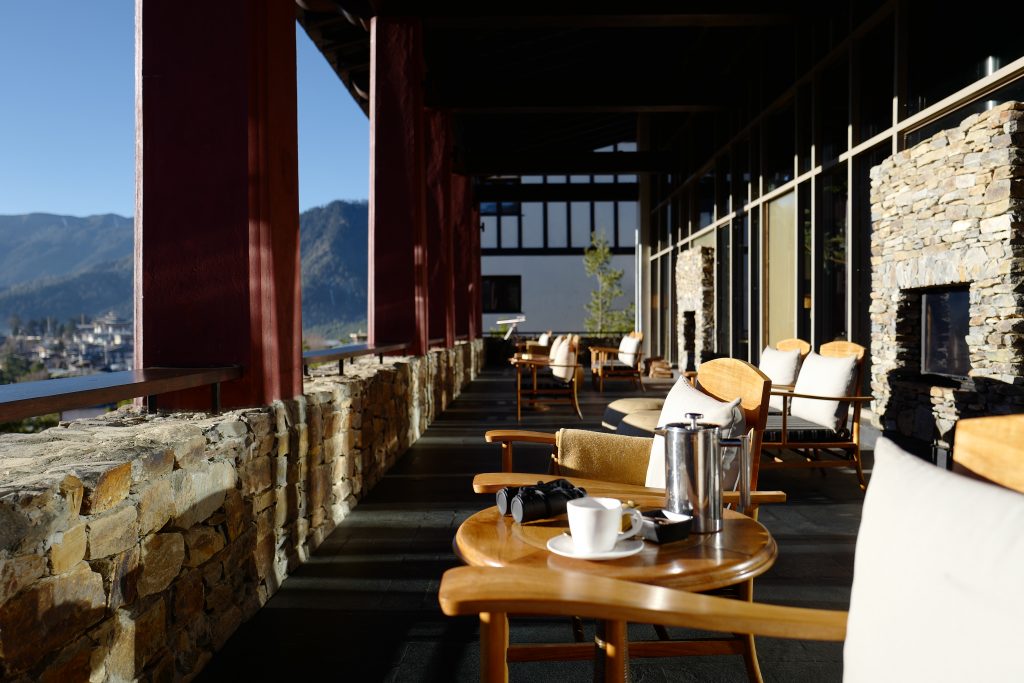Traversing Bhutan with Six Senses Hotels
Cruising between the luxury hospitality group’s multiple properties with two dedicated guides

For years now, luxury hotel group Six Senses has impressed upon travelers the positive effects of adhering, honestly, to the values of the destinations they visit. This is undeniably evident in Bhutan, the mystifying, mountainous nation in South Asia, where Gross National Happiness factors into the daily lives of its population. Set high in the Eastern Himalayas, landlocked between India and China, Bhutan’s natural beauty and its mythological history appeal to many who dream of remote travel—but several roadblocks prevent rampant tourism. This has been to the benefit of the Buddhist nation. In building blockades, the Bhutanese have preserved their culture and lands for dedicated, respectful and patient visitors.
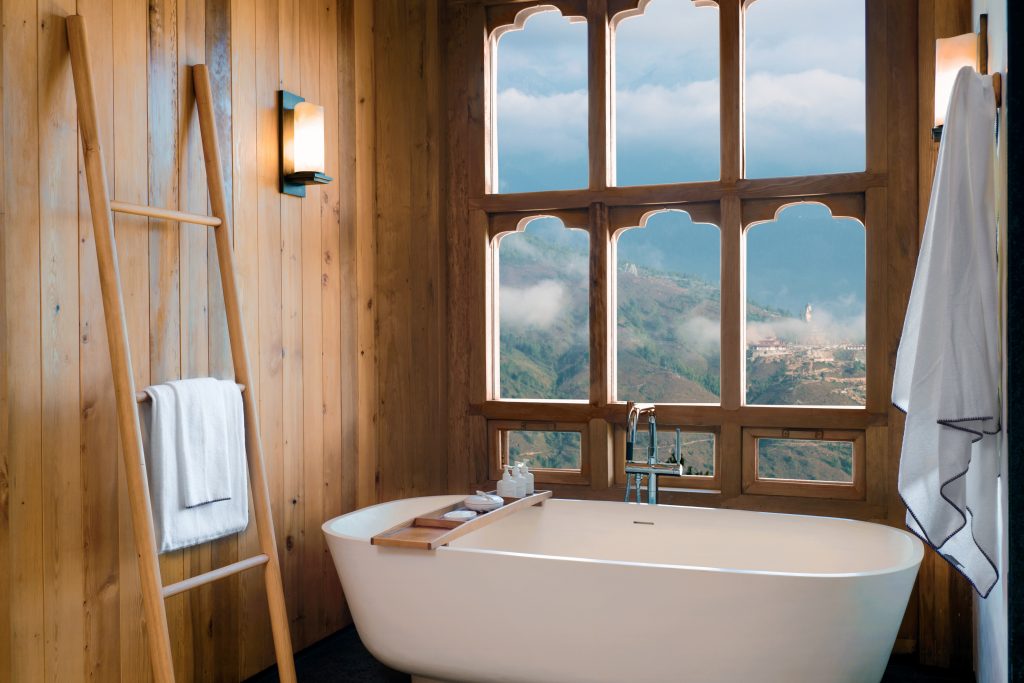
Perhaps the greatest barrier to entry in Bhutan is the visa and its myriad requirements. Anyone dreaming of a visit to the last great Himalayan Kingdom must partner with a tour operator, agree to daily spending requirements and fees (one of which is for sustainability initiatives), and then plan all of the trip in advance. For those who enjoy traveling on the fly or are susceptible to whims, the mandatory upfront itinerary Bhutan requires may seem daunting or restricting. And yet, with unmatched expertise, Six Senses prepared our visit, listened to our wants and wishes, carefully guided us past the barriers, and alleviated all concerns.
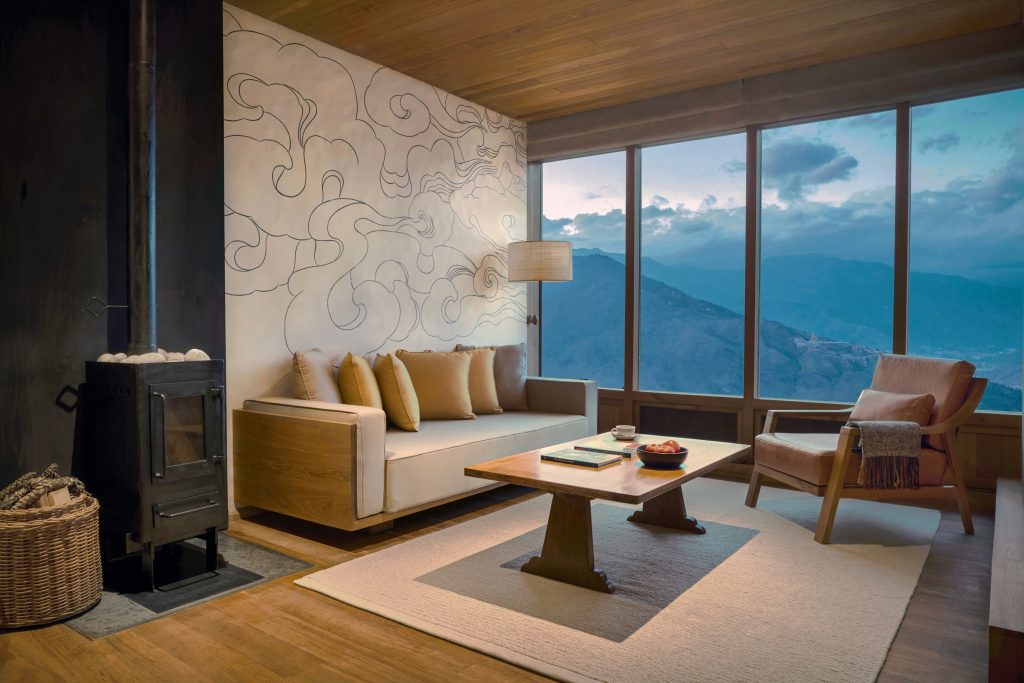
From booking the flights to directing our daily expenditure into an escrow account with the Bhutanese government, Six Senses handled each step and kept us informed of when and why it was happening. Of equal importance, with four properties dotted inside spectacular, diverse regions of the country—with a fifth scheduled to open in early 2020—they were able to weave together an itinerary that allowed us to see mountains, valleys, forests, rivers and people inhabiting it all. Each visit was punctuated with wellness activities, sightseeing, hikes and crafts. And those stops were determined through months of conversation with a concierge team that sought to ascertain our truest interests.
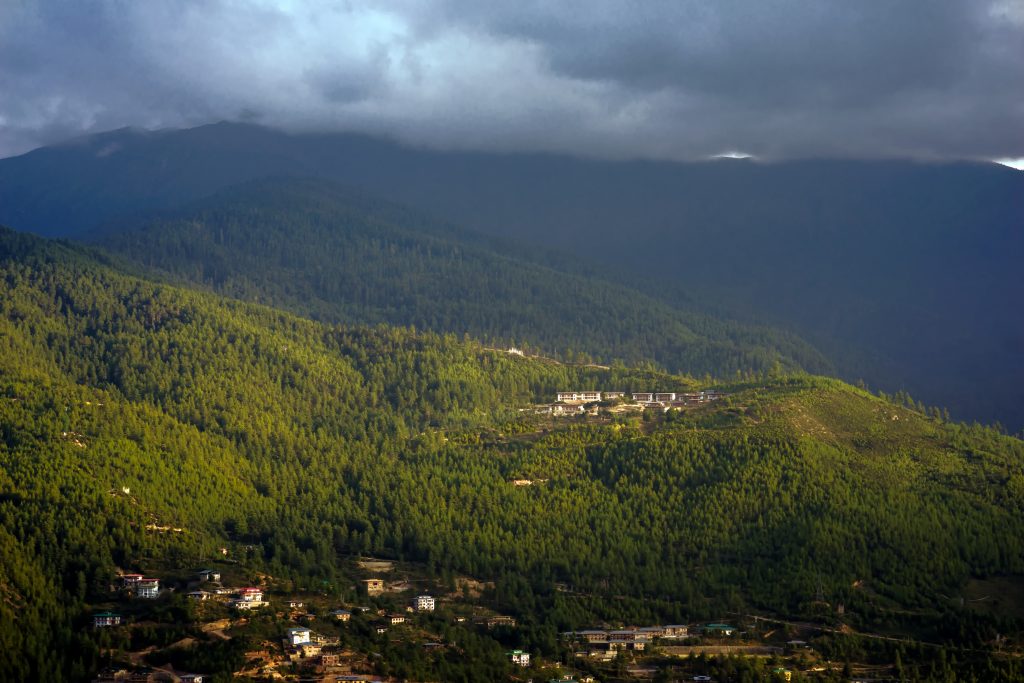
After landing in the Paro airport, we arrived to Six Senses Thimphu by night. Perched above the capital city, the lodge-style property includes only villas and suites for accommodation. Spacious, warm and comfortable, every room easily encourages relaxation and reflection—and includes a view of the city’s iconic Buddha statue in the distance. Wood and stone materials work with the land—and every attribute, accoutrements and inflection felt premium.

Direk Wongpanitkrit of Habita Architects, the firm tasked with all five properties, explains to us that “We learn the context of each site through its historical, traditional and physical context—which we normally glean from the vernacular architecture. We believe that the vernacular architecture represents the norm of each place in various dimensions. Since there is the Bhutanese regulation that we have to design ‘Bhutanese architecture,’ we had to understand their architectural language.”

He continues, “For each site, we tried to crystallize the idea into just one phrase for each place, then this would be the road map to proceed further. The ideas were from the context of each site. We came out with these themes: Castle in the Sky—the same name as my favorite Japanese anime—for Thimphu, the Ruin for Paro, Flying Farmhouse for Punakha, Bird Watching Bridge for Gangtey and Forest in the Forest for Bumthang.”
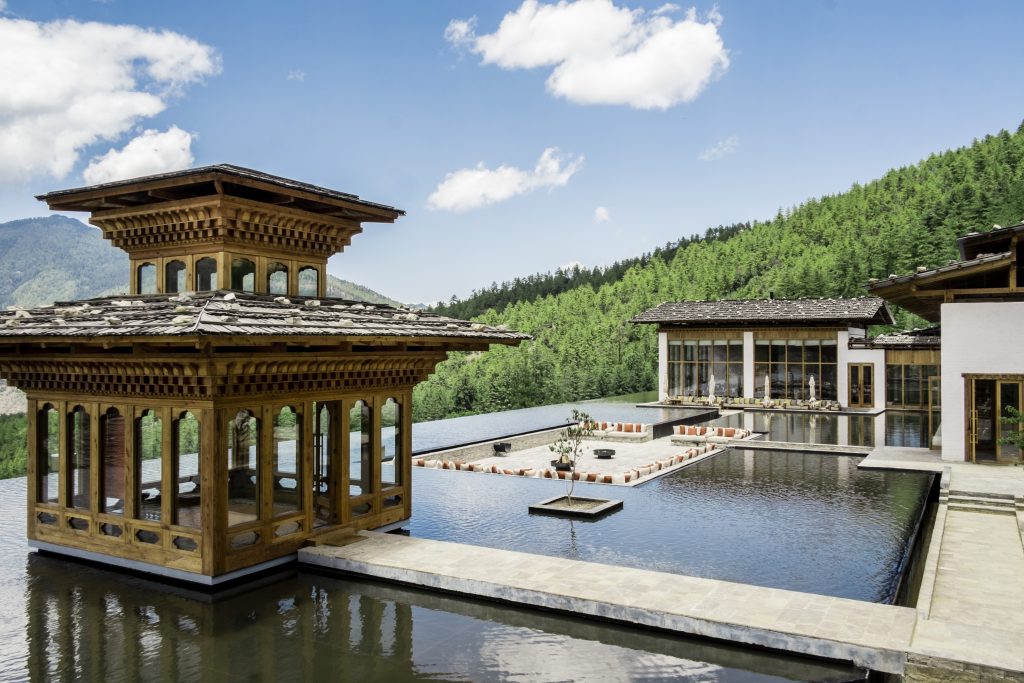
After an elaborate, generous dinner and bountiful breakfast, we truly understood why Thimphu was named Castle in the Sky. Beyond the views into the valley below, a reflecting pool that wraps several buildings seems to capture the sky and set the hotel in the clouds. After time spent exploring the grounds, we met with the on-site doctor for an analysis. This is one of the property’s offerings—a read-out of what’s potentially bothering you and how to correct it while visiting. Not only was the experience accurate, it led to consideration of behaviors over the following week of our adventure.

Most travelers to Bhutan, when partnering with a tour operator, must accept a guide or a driver. As we departed Thimphu, en route to Punakha, we quickly became grateful for having both. Our driver carefully trekked over roads both new and old—some cliffside ones were quite frightening for the timid. Along the way, our guide offered insight and information, news and history. They were employees of Six Senses and—perhaps epitomized by an outdoor tea picnic at the reverent Dochula Pass—let no detail go unattended. We would become friends with both of them quickly.
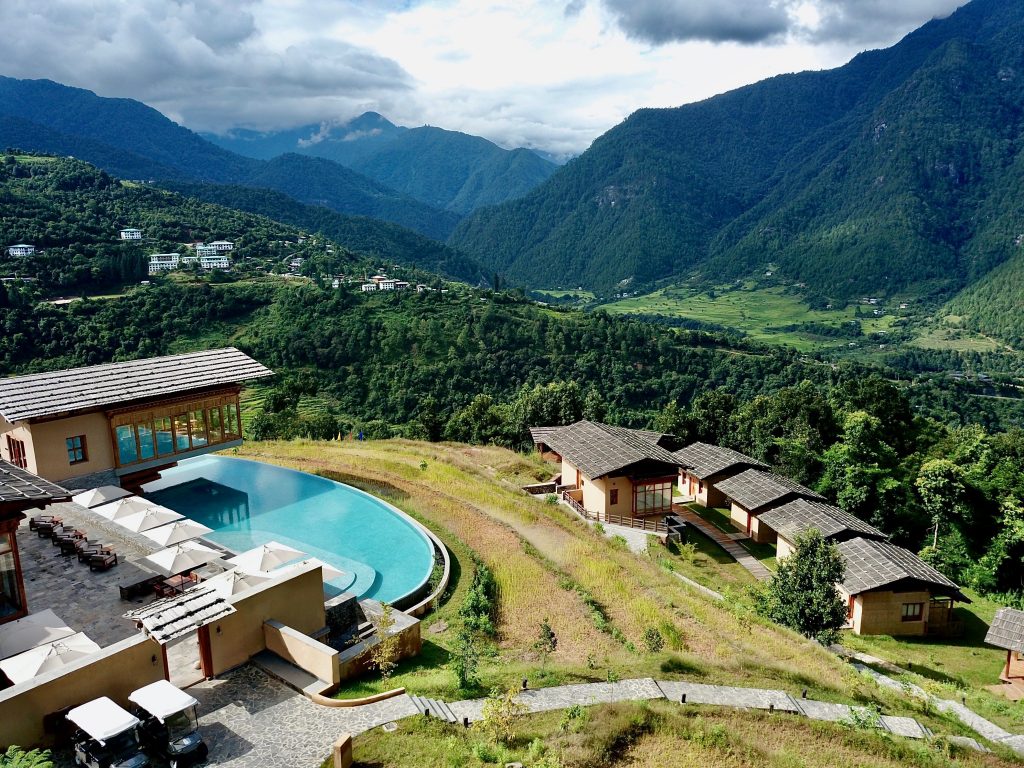
Any trip from Thimphu to the valley where Punakha is found includes what appears to be a seasonal change. While brisk up in the capital, the warmer destination down below evoked summery sensations along with its thicker, greener vegetation. Here we found that Six Senses Punakha also floats in the sky—only above a verdant passage with rice fields and rustic farmhouses. The property and its suites and villas pay homage to the landscape—seeking to blend in rather than stand out.

Six Senses Punakha stretches out serenely not far from one of Bhutan’s most famous Dzongs (castles). Beyond a cantilevered bridge, at the confluence of two rivers, the majestic Punakha Dzong is a must visit for any traveler—and helps understand the way government and Buddhism coexist.

It’s Six Senses Gangtey that should appeal most to peace-seekers. The Gangtey Valley, otherwise known as the Phobjikha Valley, feels uncommonly remote—accessible by only one road. Several major hotel groups and independent lodges have cropped up amidst the natural splendors of the gentle glacial ravine. Beauty alone hasn’t been the force behind hospitality developments; it is here, beside an ancient monastery, that rare black-neck cranes spend their winters, after leaving the Tibetan Plateau. Eight large suites and one two-bedroom villa offer direct access to valley—and hikes into the Black Mountains. As far away as Gangtey is, there’s nothing quite like listening to the monks mediate or taking archery lessons in a place of such wonder.

We did not have the opportunity to visit Six Senses Bumthang or the historic region where it will open, but with the other locations as an indicator, any person with the time and resource should consider it for their itinerary—if only to stay in the magnificent, meditative kingdom a while longer. Our last days were spent in Paro, which in addition to being the home of the airport, also houses Taktsang, otherwise known as the Tiger’s Nest. Both of these reasons make Six Senses Paro an ideal final destination for most travelers—one can venture out in the morning to hike the two hours upward to the exquisite monastery, and then fly away the next day with a grand, conclusive memory.

At and between all of these destinations, we spent hours with our Six Senses driver and guide, stopping at vistas and local restaurants, learning about the kingdom and its commitment to nature. Our memories of these two traveling companions are as powerful as those of each stay.
Tiger’s Nest and Gangtey Valley photos by David Graver, all other images courtesy of Six Senses Bhutan
